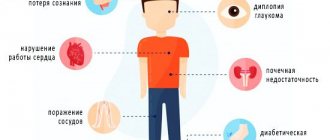Cooking and eating
Boiled and baked products, less often - fried and stewed. Meals 6 times a day: 1st breakfast, 2nd breakfast, lunch, afternoon snack, dinner and at night.
Allowed
Bread and flour products: rye, protein-bran, protein-wheat, wheat from 2nd grade flour, on average 300 g per day
Soups: vegetable, cabbage soup, borscht, beetroot soup, okroshka, weak low-fat meat, fish and mushroom broths with vegetables and permitted cereals, potatoes and meatballs
Meat, poultry: lean beef, veal, pork (trimmed, meat), lamb, rabbit, chickens and turkeys after boiling, dietary sausages and sausages, tongue, liver – limited
Fish: low-fat types, canned fish in its own juice or tomato
Dairy products: milk and fermented milk products, semi-fat and low-fat cottage cheese, limited sour cream, unsalted and low-fat cheese
Eggs: 1-1.5 pcs. per day soft-boiled, white omelettes
Cereals: porridge from buckwheat, barley, millet, pearl barley, oatmeal, legumes
Vegetables: cabbage, zucchini, pumpkin, lettuce, cucumbers, tomatoes, eggplants, with restrictions: green peas, potatoes, carrots, beets. Can be eaten raw
Fruits, sweet dishes: fresh fruits and berries of sweet and sour varieties in any form, jellies, mousses, compotes, candies and cookies with xylitol, sorbitol or saccharin. Limited honey
Sauces and spices: low-fat sauces based on weak meat, fish and mushroom broths, vegetable broth. Limited: pepper, horseradish, mustard
Drinks: tea, coffee with milk, juices from vegetables, low-sweet fruits and berries, rosehip decoction Fats: unsalted butter and ghee, vegetable oils for dishes
Must be excluded
Products made from butter and puff pastry, cakes, strong, fatty broths, milk soups with semolina, rice, noodles, fatty meats, duck, goose, smoked meats, most sausages, fatty fish, salted fish, canned fish in oil, caviar , salty cheeses, cream, sweet curd cheeses, rice, semolina, limit pasta, salted and pickled vegetables, grapes, raisins, bananas, figs, dates, jam, candies, ice cream, grape and other sweet juices, carbonated drinks and lemonades , animal and cooking fats, alcoholic beverages. Daily sugar intake is determined by your doctor and usually depends on the dose of insulin.
Download and print:
Diet No. 9
Make an appointment Do not self-medicate. Contact our specialists who will correctly diagnose and prescribe treatment.
Menu for the week
As an example, a possible menu of “Diet No. 9” is presented for every day for patients suffering from diabetes mellitus of the second degree, that is, non-insulin dependent.
Monday:
- first breakfast: low-fat cottage cheese - 200 g with berries - 40 g;
- second breakfast: one glass of kefir;
- lunch: vegetable soup – 150 ml, baked lamb – 150 g, stewed vegetables – 100 g;
- afternoon snack: cabbage and cucumber salad, dressed with olive oil - 100 g;
- dinner: grilled dorado fish – 200 g, steamed vegetables – 100 g.
Tuesday:
- first breakfast: buckwheat porridge with milk 150 g;
- second breakfast: two green apples;
- lunch: borscht (without meat) - 150 ml, boiled beef - 150 g, dried fruit compote without sugar;
- afternoon snack: rosehip decoction – 150 ml;
- dinner: boiled fish – 200 g, fresh vegetables – 150 g.
Wednesday:
- first breakfast: cottage cheese casserole - 150 g,
- second breakfast: rosehip decoction - 200 ml;
- lunch: fresh cabbage soup (without meat) – 150 ml, fish cutlets – 150 g, fresh vegetables – 100 g;
- afternoon snack: boiled egg;
- dinner: steamed meat cutlets – 200 g, stewed cabbage – 150 g.
Thursday:
- first breakfast: two-egg omelette with vegetables 150 g;
- second breakfast: drinking yoghurt - 150 ml;
- lunch: broccoli cream soup – 150 ml, stuffed peppers – 200 g;
- afternoon snack: carrot casserole with cottage cheese - 200 g;
- dinner: chicken kebab – 200 g, grilled vegetables – 150 g.
Friday:
- first breakfast: millet porridge 150 g, apple;
- second breakfast: 2 oranges;
- lunch: fish soup 200 ml, meat goulash - 100 g, pearl barley porridge - 100 g;
- afternoon snack: a glass of kefir, bran – 100 g;
- dinner: meat cutlets – 150 g, buckwheat porridge – 100 g, baked asparagus – 70 g.
Saturday:
- first breakfast: bran - 150 g, apple;
- second breakfast: soft-boiled egg;
- lunch: vegetable stew with pieces of meat (beef or lamb) – 200 g;
- afternoon snack: salad of tomatoes and celery stalks – 150 g;
- dinner: stewed lamb with vegetables – 250 g.
Sunday:
- first breakfast: low-fat cottage cheese 100 g with yogurt 50 g;
- second breakfast: grilled chicken breast - 100 g;
- lunch: vegetable soup – 150 ml, meat goulash – 100 g, salad of celery stalks and apples – 100 g;
- afternoon snack: berries – 125 g;
- dinner: boiled shrimp – 200 g, steamed green beans – 100 g.
menu for the week.
Dish recipes
Healthy recipes suitable for the “9 table” diet.
Diet cutlets
To prepare you will need 200 g of lean meat, 30 g of rye bread, 10 g of butter, a small onion, 40 ml of low-fat milk, salt, seasonings.
Cooking process:
- Rinse the meat, remove tendons and pass through a meat grinder;
- Soak the bread in milk;
- Finely chop the onion and add to the minced meat;
- Salt, pepper to taste;
- Form into small patties and place on a greased baking sheet;
- Cook for 20 minutes in the oven at 180 degrees Celsius.
Pollock in Tatar style
To prepare you will need 200 g of lean fish fillet, a quarter of a lemon, 30 g of low-fat sour cream, olives, herbs, olive oil.
Cooking process:
- Add 20 ml of olive oil to the baking dish, lay out the fish pieces;
- Sprinkle the fillet with lemon juice;
- Place in the oven preheated to 170 degrees Celsius for 5 minutes;
- Then add sour cream, olives, zest, salt and simmer for another 20 minutes;
- Before serving, add finely chopped herbs.
Diet pudding
The following ingredients will be required: 200 g of zucchini, 100 g of apples, 30 ml of milk, 4 tbsp. l. rye flour, egg, tbsp. l. butter, 40 g low-fat sour cream.
Cooking process:
- Peel the apples and remove seeds, grate them on a coarse grater, just like zucchini;
- Add milk, flour, butter, egg, mix well;
- Pour into the mold, place in the oven for 25 minutes at 180 degrees Celsius;
- You can season it with low-fat sour cream before serving.
Eggplants for diabetes
One of the main advantages of eggplants is their low GI (glycemic index), they consist of 90% water. The fruit is rich in beneficial vitamins, microelements and dietary fiber, promotes the production of insulin, which has a positive effect on the patient’s pancreas. Reduces the concentration of glucose in the body, improves water-salt balance, strengthens the walls of blood vessels. It has a positive effect on the psychological and physical state of a diabetic, the person becomes less irritable.
Eggplants are very useful in the fight against diabetes, in addition, they can be very tasty to cook
There are many recipes for delicious eggplant preparation. To improve the health of the body, it is not necessary to consume them every day; 2 times a week is quite enough. It is worth choosing eggplants with thin skin and fewer seeds. It is not recommended to fry them; boiled, stewed or baked eggplants will be much healthier.
What sweeteners can be used
Since a diet for diabetes involves the exclusion of sugar, it can be replaced with sweeteners of natural or synthetic origin on the recommendation of a doctor.
Natural sugar substitutes
Diet number 9 allows for the introduction of natural sweeteners into the diet. There are several varieties of these products:
- sorbitol;
- fructose;
- stevia;
- xylitol
All sweeteners except stevia are high in calories. They should be introduced into the diet with caution, and strict calorie tracking is recommended. If patients are overweight, it is recommended to use only stevia, since the product is considered the safest.
Stevia is one of the safest sugar substitutes for people with diabetes.
Synthetic sweeteners
Artificial sweeteners include syrups or tablets:
- Acesulfame potassium;
- Sodium cyclamate;
- Aspartame.
Each of the drugs has its own contraindications. Acesulfame potassium is prohibited among patients with heart failure. People suffering from kidney pathologies should not add sodium cyclamate to their diet. Aspartame is excluded if there is a violation of amino acid metabolism in the body. To prevent serious consequences, it is recommended to take artificial sweeteners strictly as prescribed by your doctor.
Menu design principles
The diabetic menu is calculated based on the following criteria:
- age;
- weight;
- Lifestyle;
- physical exercise.
It is recommended to make calculations with the help of an endocrinologist or nutritionist; he should know the history of your illness. The specialist adjusts the patient’s diet based on his condition, body weight and individual characteristics of the body. For overweight diabetics, it is necessary to replace carbohydrates and fats with vegetable products, for underweight diabetics, it is necessary to increase the calorie content of food consumed. In summer and spring, it is recommended to increase the diet of fruits and vegetables.
The following foods are not recommended for type 1 and type 2 diabetics:
- baked goods, butter products;
- desserts high in calories (cream, ice cream, etc.);
- lard, pork (fatty meat);
- alcohol and tobacco products;
- sugar (a sweetener should be used);
- canned food, sausage;
- pickled and salted vegetables;
- fatty fish;
- sweets.
IMPORTANT! Sometimes doctors prohibit diabetics from using diabetic products, because the same sweeteners sometimes prevent the patient from losing weight.
What is the glycemic index
The glycemic index (GI) is the ability of foods to cause an increase in the patient's blood sugar level after entering the body. This value is used when creating a menu for diabetics with an insulin-dependent course of the disease. All products have their own GI. The higher this indicator, the faster blood sugar rises after eating a dish.
The glycemic index is classified into high (above 70 units), medium (40 to 70 units) and low (up to 40 units). The diet of a person suffering from diabetes should completely exclude foods with a high GI; foods with average values are consumed in limited quantities. The main part of the patient's diet consists of foods with a low glycemic index.
Tables of products broken down into such groups can be found on information portals or medical websites. With their help, you can create your own menu for a diabetic.
Sample diet menu No. 9.
- First breakfast: buckwheat porridge (cereals - 40 g, butter - 5 g), meat pate (meat - 60 g, butter - 10 g), tea with milk (milk - 50 g).
- Second breakfast: a glass of kefir.
- Lunch: vegetable soup (oil - 5 g, potatoes - 50 g, cabbage - 100 g, carrots - 25 g, sour cream - 10 g, tomatoes - 20 g), boiled meat with potatoes (meat - 100 g, potatoes - 150 g , oil – 5 g), apple (200 g).
- Afternoon snack: yeast drink.
- Dinner: carrot zrazy with cottage cheese (carrots - 75 g, cottage cheese - 50 g, egg - 1 pc., sour cream - 10 g, semolina - 8 g, crackers - 5 g), boiled fish with cabbage (fish - 100 g , vegetable oil – 10 g, cabbage – 150 g), tea.
- 1.5 hours before bedtime: a glass of kefir.
- Bread for the whole day: wheat – 130 g, rye – 250 g.
It is worth paying attention to the possible interchangeability of products. So, 25 g of wheat bread is replaced by: 18 g of wheat flour, 20 g of rice, 20 g of oatmeal, 18 g of pasta, 60 g of potatoes, 180 g of carrots, 135 g of apples, 150 g of pears (peeled vegetables).
A medical diet is prescribed only by the attending physician , who has full knowledge of the medical history of a particular patient.
Dietary features for type 2 diabetes
For type 2 diabetes, patients are advised to adhere to the following dietary principles:
- limit your daily caloric intake. Calorie intake must correspond to daily energy expenditure;
- food should be taken 5-6 times a day in small portions;
- You should try to eat food at the same time, this will help normalize digestion and improve metabolic processes;
- It is important to exclude spicy, fatty, fried, smoked, salty foods from the diet;
- sugar must be replaced with a sweetener;
- the amount of fats and carbohydrates must be reduced, while the intake of proteins must remain at the proper level;
- It is recommended to prepare food by boiling, stewing, baking;
- sweets are allowed to be consumed in limited quantities only during the main meal, but not during snacks, as this will cause a jump in blood glucose;
- Strong tea, coffee, alcohol, carbonated drinks are removed from the diet;
- The amount of salt is sharply limited.
Healthy nutrition is the basis for successful treatment of diabetes mellitus
Important! Features of the diet must be discussed with the attending physician. The specialist will give the necessary recommendations and help you choose the best daily nutrition option.
General principles for choosing a diet
Despite the fact that each diet is individual, they are all selected taking into account the main factors:
- the needs of each specific organism.
Depending on the ongoing disease and its consequences, each organism needs its own set of nutrients, vitamins and macroelements. Based on the indicators of each specific case, the doctor selects the necessary diet; - taking into account the features of various products.
Each of them differs in its nutritional value, is absorbed differently in the body, and has its own effect on any disease. Therefore, it is important to take into account not just KBJU, but also the chemical composition of a particular product; - the right way to cook.
A weakened body needs strength to recover from an illness, so meals in a therapeutic diet should require a minimum amount of energy for digestion. This can be achieved using special cooking methods. As a rule, special nutrition involves the consumption of boiled, steamed and baked foods. Particularly dense foods are ground or overcooked.






